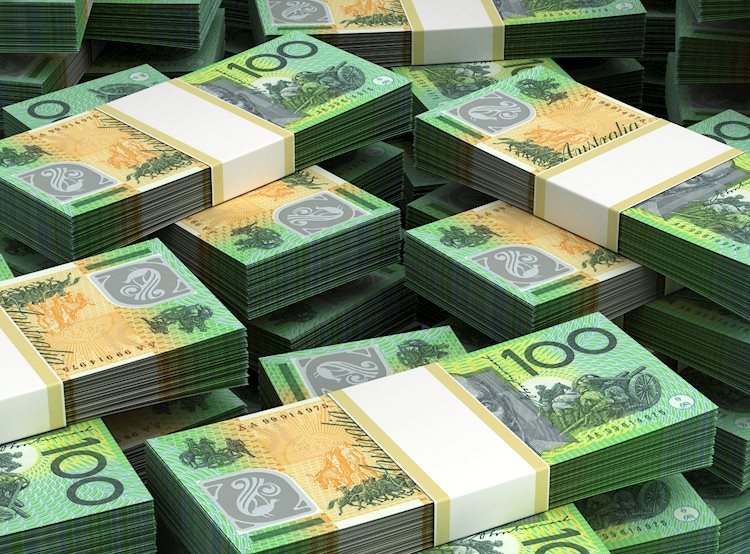- AUD/USD declines amidst renewed selling pressure, testing 0.6700 support.
- Market sentiment implies a 55% probability of a 25-basis-point rate cut by the RBA this year.
- The fragile economic situation in China also weighs on the Aussie.
The AUD/USD pair declined by 0.40% to 0.6705 in Tuesday’s session as the Australian Dollar faced renewed selling pressure. The US Dollar has regained strength, moving toward two-month highs due to increased risk aversion and ongoing concerns about China.
The main mover of the Aussie lately is the economic situation in China, which seems to be unnerving investors and hence pushing them to seek refuge in the US Dollar. In the meantime, markets seem to be confident of the Reserve Bank of Australia (RBA) cutting 25 bps by year’s end.
Daily digest market movers: Australian Dollar sinks on strong USD and Chinese economic woes
- The bearish momentum for the Australian Dollar was caused by an irresolute US Dollar and skepticism about China’s stimulus measures.
- A decline in copper prices also contributed to the downward pressure on the Australian Dollar, while iron ore prices remained mostly unchanged.
- Deflationary concerns deepened in China based on September data, raising doubts about the effectiveness of its stimulus efforts.
- Market sentiment reflects a 55% probability of a 25 bps rate cut by the RBA by year-end.
AUD/USD technical outlook: Bearish momentum intensifies, buyers must defend 0.6700
The AUD/USD currency pair has declined in recent sessions with a drop of 0.42% on Tuesday. This decline is in line with several technical indicators. The Relative Strength Index (RSI), which measures the strength of buying and selling pressure, is currently at 36, indicating that the selling pressure is stronger. The RSI is also declining sharply, suggesting that the selling pressure is intensifying.The Moving Average Convergence Divergence (MACD) is another indicator that suggests that bearish pressure is rising. Overall, the technical outlook for the AUD/USD is bearish, suggesting that the pair could continue to fall in the near term. Key support levels to watch include 0.6700, 0.6680 and 0.6650, while resistance levels to watch include 0.6750, 0.6760 and 0.6780.
RBA FAQs
The Reserve Bank of Australia (RBA) sets interest rates and manages monetary policy for Australia. Decisions are made by a board of governors at 11 meetings a year and ad hoc emergency meetings as required. The RBA’s primary mandate is to maintain price stability, which means an inflation rate of 2-3%, but also “..to contribute to the stability of the currency, full employment, and the economic prosperity and welfare of the Australian people.” Its main tool for achieving this is by raising or lowering interest rates. Relatively high interest rates will strengthen the Australian Dollar (AUD) and vice versa. Other RBA tools include quantitative easing and tightening.
While inflation had always traditionally been thought of as a negative factor for currencies since it lowers the value of money in general, the opposite has actually been the case in modern times with the relaxation of cross-border capital controls. Moderately higher inflation now tends to lead central banks to put up their interest rates, which in turn has the effect of attracting more capital inflows from global investors seeking a lucrative place to keep their money. This increases demand for the local currency, which in the case of Australia is the Aussie Dollar.
Macroeconomic data gauges the health of an economy and can have an impact on the value of its currency. Investors prefer to invest their capital in economies that are safe and growing rather than precarious and shrinking. Greater capital inflows increase the aggregate demand and value of the domestic currency. Classic indicators, such as GDP, Manufacturing and Services PMIs, employment, and consumer sentiment surveys can influence AUD. A strong economy may encourage the Reserve Bank of Australia to put up interest rates, also supporting AUD.
Quantitative Easing (QE) is a tool used in extreme situations when lowering interest rates is not enough to restore the flow of credit in the economy. QE is the process by which the Reserve Bank of Australia (RBA) prints Australian Dollars (AUD) for the purpose of buying assets – usually government or corporate bonds – from financial institutions, thereby providing them with much-needed liquidity. QE usually results in a weaker AUD.
Quantitative tightening (QT) is the reverse of QE. It is undertaken after QE when an economic recovery is underway and inflation starts rising. Whilst in QE the Reserve Bank of Australia (RBA) purchases government and corporate bonds from financial institutions to provide them with liquidity, in QT the RBA stops buying more assets, and stops reinvesting the principal maturing on the bonds it already holds. It would be positive (or bullish) for the Australian Dollar.
Read the full article here

